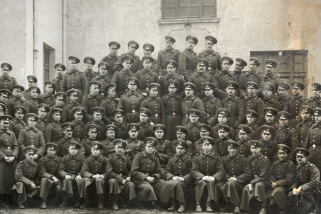4TH INTERNATIONAL ANNUAL CONFERENCE (IBAC)
“TURKEY AND ROMANIA” -HISTORICAL TIES AND FUTURE COLLABORATION IN THE BALKANS-
BUCHAREST
15-18 OCTOBER 2014
http://ibac.istanbul.edu.tr/
ABOUT THE CONFERENCE
Revealing the strong historical ties between Turkish and Romania in terms of social, economic, cultural and political aspects is very important for the improvement and transfer of the mutual relations between the two nations to the future on a firm ground. What left behind from the contact of the Turks with local people in the Balkans which occurred after the Turkish exodus to the Europe as early as fifth century and developed on the later periods of time is a huge historical heritage. In this respect the beginning of the Turkish-Romanian relations date back to the tenth century. The ages old relations provided the both sides an association in history, language and culture. It is certain that the recent increase in the volume of the official relations between the two countries will intensify faster and stronger should those common ground are focused. As a matter of fact, by quoting that the strength of the Turkish-Romanian relations comes from the close historical ties between the two nations, the leaders of both countries in their mutual official visits have stressed on this point.
Long lasted administrative union in the Balkans established by the Ottoman Empire comes into prominence as the time period in which Turkish and Romanian people lived together peacefully for a long time. Under this Ottoman administrative union the voivodesofEflakandBogdan (Principalities of Wallachia and Moldavia) had a privileged status. Thus, the Romanian people living under the Ottoman administration could continue to keep intact their cultural identity, costumes, traditions, religion, language and the rest that what formed the socio-cultural characteristics unique to Romanians. These two principalities played a role so efficient for the Ottoman Empire in its political and commercial connection with the Europe. At the same time they were also vital for supplying Istanbul, the capital city of Ottoman Empire with food.
It should be emphasized that the period from the early eighteenth century to 1821 during which time Phanariot Greek governors were in charge of the two principalities was a turning point in the history of Turkish-Romanian relations. Those governors ruling the principalities were appointed directly by the Ottoman central government. If one remembers that those Greek governors appointed to these administrative posts acted as the translators for the Sublime Port, performing an essential service for the Ottoman foreign affairs, the great value attributed by the Ottoman Empire to the rule of two principalities can be naturally realised. This way of rule changed after 1821 and native Romanian officials replaced the Greek governors.
The nineteenth century was also the century, apart from some other important events, which witnessed a series of political and military development culminating in the Romanian independence. Crimean war broke out in 1853 ended the Russian control of Wallachia and Moldavia after Russia was severely defeated by the allies. Three years later Prince Alexandru Ioan Cuza got elected as the prince of the both principalities. This personal union of two Danubian principalities developed into a single Romanian state in 1862 which became a fully independent country after the end of Russo-Turkish War of 1877-78. A new era in the relations between the two nations started just after Berlin Treaty which stipulated an independent Romania, where two independent countries developed good relations on the ground of mutual respect and understanding. This friendship ceased for a short period of time during the Balkan Wars. The two countries were on opposing sides during the World War I which would start few years later. With the foundation of Turkish Republic in 1923 a new era in the relations between Turkey and Romania began which has evolved on good terms up to present times.
The 4th IBAC Conference will focus on the relations between Turkish and Romania from a historical perspective and this will be a very helpful guide in determining and addressing the problems and assessing of the potential for future collaborations between the two countries in the Balkans for better socio-economic conditions and sustainable peace in the region.













